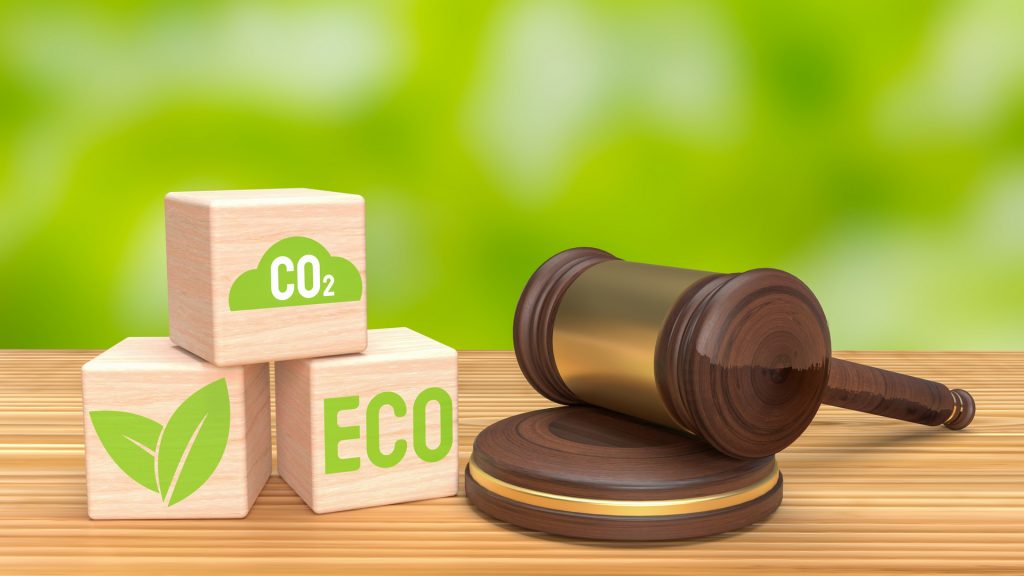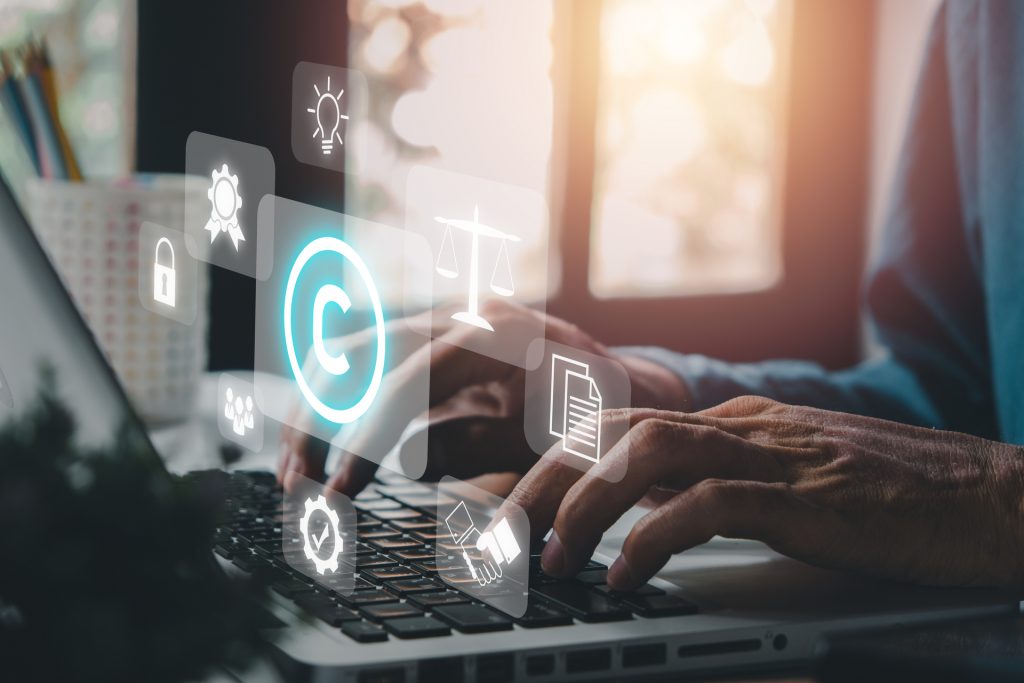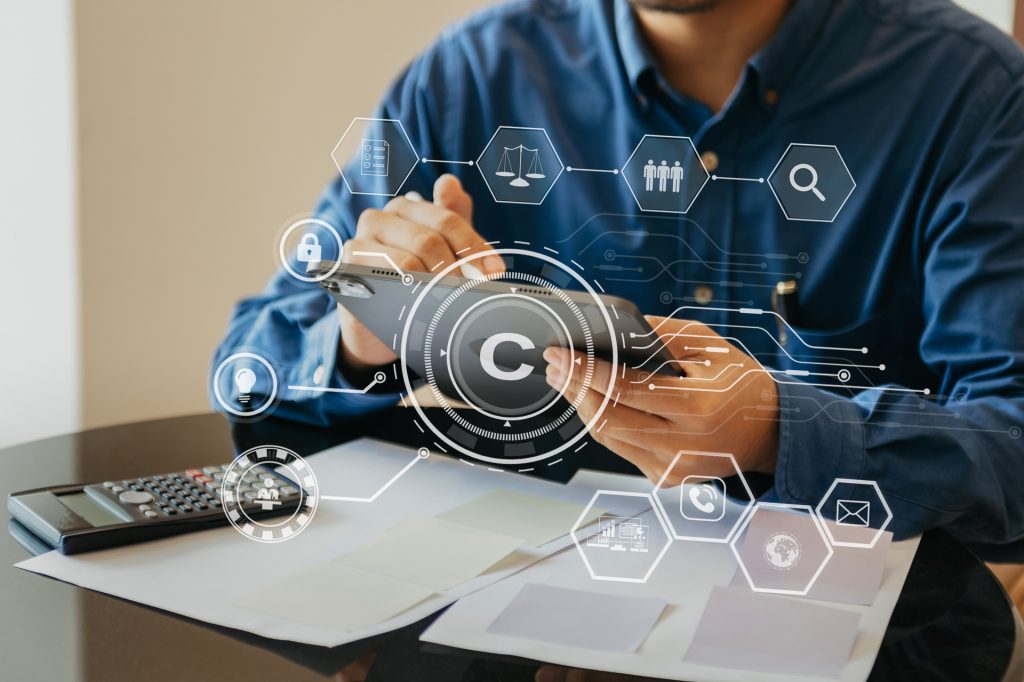[ad_1]
Essential key terms from last week’s news headlines or beyond the headlines for the UPSC-CSE and other competitive exams. Let’s not just limit ourselves to facts. Dive deep to know:
Did the import restriction on laptops play a role in the uptick in Production Linked Incentive applications?
What is “suyamariyathai”?
What does “Governing AI: A Blueprint for India” propose?
And more…
WHY IN NEWS?
— The Delhi High Court Thursday (August 31) permitted two children with autism spectrum disorder (ASD) to undergo stem cell therapy for treatment of their condition.
— The order came in a petition moved by family members of the two children, challenging a December 6, 2022 recommendation of the Ethics and Medical Registration Board (EMRB) of the National Medical Commission (NMC) against the use of stem cell treatment for ASD.
KEY TAKEAWAYS
What are stem cells?
— Stem cells are cells from which all other cells, with their respective specialised functions, are generated.
— The human body, under certain conditions, “divides” stem cells to either create new stem cells or cells with specific functions, such as blood cells, brain cells, bone cells, muscle cells, etc.
— There are two main categories of stem cells: pluripotent stem cells, or cells with the ability to differentiate into all of the cells of the adult body, and adult stem cells, which are tissue or organ-specific and regenerate to form cells only of that particular organ.
— Pluripotent stem cells are naturally found only in embryos. However, in 2006, researchers identified conditions that would allow some mature human adult cells to be reprogrammed into an embryonic stem cell-like state. Those reprogrammed stem cells are called induced pluripotent stem cells.
How are stem cells used in medicine?
— The regenerative properties of stem cells make them extremely valuable in medicine. This is why stem cell treatments are also termed as regenerative medicine.
— For over 90 years now, hematopoietic stem cell transplantation has been used to treat people with conditions such as leukaemia and lymphoma. After chemotherapy or radiation therapy wrecks the patient’s healthy cells (along with the cancerous ones), a donor’s healthy bone marrow reintroduces functional stem cells to replicate inside of a patient and to produce additional normal blood cells.
— There are typically a very small number of adult stem cells in each tissue, and once removed from the body, their capacity to divide is limited. This is the fundamental limitation of stem cell therapies at the moment.
— That is why, scientists have been focussed on manipulating adult stem cells to exhibit characteristics of pluripotent stem cells.
Dive deep…
What is autism spectrum disorder and how is it treated?
— Autism spectrum disorder is a neurological and developmental disorder that affects how people interact with others, communicate, learn, and behave.
— According to the American Psychiatric Association’s Diagnostic and Statistical Manual of Mental Disorders (DSM-5), people with ASD often have difficulty with communication and interaction with other people, restricted interests and repetitive behaviours, and symptoms that affect their ability to function in school, work, and other areas of life.
— Currently, there is no cure for ASD – treatments and therapies are geared towards managing symptoms and helping someone with ASD lead a happy and functional life. Conventional therapies include social skills training, early intensive behaviour therapy, applied behaviour analysis, speech therapy, and occupational therapy. Psychotropic drugs and transcranial magnetic stimulation are also commonly used.
Can stem cell treatment be used for ASD?
— According to some experts, ASD has potential to be a good candidate for stem cell therapy because evidence exists that some types of stem cells, given intravenously, can improve the overall regulation of the immune system and the neural connectivity in the brain.
— However, stem cell therapy is not typically used for treating ASD yet, and initial clinical trials have shown mixed results. Currently, the treatment is very much in an experimental stage and there is simply not enough data to make definitive claims.
— This is why EMRB made recommendations against its use. It is not that there is absolutely no possibility of the therapy helping, there is just not sufficient evidence, especially given the general risks associated with the treatment which includes adverse reactions and painful, potentially debilitating side effects.
— There is also limited understanding of its long term effects and as pointed out by doctors representing the EMRB, there is no established protocol for its use to treat autism.
— EMRB’s recommendation came on the back of what it called “predatory marketing” of stem cell therapy “which gave false hope” to parents and caregivers regarding the possibility of “curing” ASD.
— Crucially, the High Court does not opine on the general validity of using stem cell therapies for ASD, but in these two cases, allows ongoing treatment to continue. The HC bench said that the NMC is permitted to take a final view on the recommendation as per provisions of the NMC Act.
Point to ponder: Do stem cells grow better in space?
1. MCQ:
Consider the following statements : (UPSC CSE 2020)
(1) Genetic changes can be introduced in the cells that produce eggs or sperms of a prospective parent.
(2) A person’s genome can be edited before birth at the early embryonic stage.
(3) Human induced pluripotent stem cells can be injected into the embryo of a pig.
Which of the statements given above is/are correct ?
(a) 1 only
(b) 2 and 3 only
(c) 2 only
(d) 1, 2 and 3
WHY IN NEWS?
— To solve the ongoing conflict in Manipur and assuage Kukis, the state has proposed to the Centre that the existing autonomous hill councils be give more autonomy.
— The state government is opposed to the demand of “separate administration” made by Kukis since the onset of violence on May 3, and has proposed this as an alternative. Sources, however, say Kukis are unlikely to compromise, claiming hill councils have been ineffective.
KEY TAKEAWAYS
Deeptiman Tiwary Explains:
What are autonomous hill (or district) councils?
— When the British took over the-then Assam, their imposition of formal laws on the land was resisted ferociously by tribal populations living in the hills, who had their own customary laws.
— To avoid confrontation — as they were only interested in economic exploitation of the region — the British divided the hill regions of Assam into “excluded” and “partially excluded” areas through the Government of India Act, 1935. In these areas, federal or provincial laws would not apply until the governor felt they were needed for peace and development.
— The ostensible aim of the provision was to allow tribal populations to govern themselves.
— When India became independent, this provision was adopted with improvements into the Sixth Schedule of the Constitution based on recommendations made by a committee under then Assam premier Gopinath Bordoloi.
— It had recommended creation of autonomous district councils (ADCs) in the six hill districts of Assam — United Khasi-Jaintia Hills District, Garo Hills District, Lushai Hills District, Naga Hills District, North Cachar Hills District, and Mikir Hills District—so that the tribal people could protect their identity and resources.
— Some of these hill districts later became states: Khasi-Garo districts became Meghalaya, Naga Hills District became Nagaland, while Lushai Hills became Mizoram, and the existing ADCs were either subsumed, were renamed, or new ones were created. Tripura was added to the list in 1986.
— Currently, there are 10 ADCs under the Sixth Schedule in the North East, with three each in Assam, Meghalaya and Mizoram, and one in Tripura. Manipur has six ADCs, but these came into existence in 1971 under an act of Parliament.
— The Bordoloi committee also recommended creation of regional councils under ADCs which would cater to the needs of minor tribes in the jurisdiction of those ADCs.
How was it adopted in the Constitution?
— The Sixth Schedule was adopted under Article 244 of the Constitution with provisions for formation of autonomous administrative divisions within a state. These divisions, in the form of ADCs, were granted certain legislative, judicial and administrative autonomy within the state.
— According to the Sixth Schedule, the ADCs administering a region within a state have 30 members with a term of five years and can make laws, rules and regulations with regard to land, forest, water, agriculture, village councils, health, sanitation, village and town level policing, inheritance of property, marriage and divorce, social customs, and mining, among other issues. The Bodoland Territorial Council in Assam is an exception to this with more than 40 members and rights to make laws on 39 issues.
— ADCs also have powers to form courts to hear cases where both parties are members of Scheduled Tribes and the maximum sentence is less than 5 years in prison.
— During debates in the Constituent Assembly, the proposal brought by Meghalaya (then Khasi Hills) politician James Joy Mohan Nichols Roy was opposed by some representatives from Assam who argued that it was an attempt to “perpetuate primitive conditions of life”. To this, Roy argued that the tribal life was free from gender inequality, casteism and communalism, ills which the modern Indian society was only beginning to wake up to. Chairman of the Constituent Assembly BR Ambedkar supported Roy.
What are Manipur’s hill councils?
— Although Manipur went through the same phase of governance division when the British took over the region in 1891, somehow its hill areas were never covered under the Sixth Schedule. The Maharaja of Manipur had in 1939 agreed with the British to exclude the hill areas of the region from his direct control and governance. In fact, the demand for a separate administration for hill areas has been raised in the region since the early 1960s.
— It was in this context that in December 1971, Parliament passed The Manipur (Hill Areas) District Council Act, paving the way for creation of ADCs in Manipur’s hill areas. These regions constituted 90% of its geographical area, inhabited by tribes such as Nagas, Kukis, Zomis, Hmars, etc. At that time, Manipur was a Union Territory.
— Here too the stated aim of the legislation was to grant the hill people a chance at self-governance, protect their identity and culture, and to give them rights over the management of their resources.
— The councils are to have not more than 18 members who are to be elected and enjoy powers of taxation, maintenance of properties, allotment of land, management of forests, regulation of cultivation, and legislative authority on matters of marriage, inheritance, social customs and appointment of chiefs.
Dive deep…
How are Manipur ADCs different from Sixth Schedule ADCs?
— Although the law behind Manipur ADCs was inspired by the Sixth Schedule, it lacks as much teeth. While other ADCs draw their power from the Constitution, the Manipur ADCs are dependent on the state Assembly due to the provisions of the Act.
— ADCs under the Sixth Schedule have far wider legislative powers spanning several matters of governance, while those in Manipur are limited to personal matters of marriage, divorce and social customs. The former only need the assent of the Governor for their proposals to become laws. The latter have to route them through Hill Area Committees (comprising MLAs from the hills) and present it to the state Assembly.
— While both have budgeting powers, the former gets central grants through the state, while the latter is dependent on the state government for financial devolution. Unlike Sixth Schedule ADCs, Manipur ADCs are subservient to the Deputy Commissioner, who is appointed by the state government. In almost all matters, the DC’s decision is final unless overruled by the Governor. The DC can even dissolve the ADCs with the assent of the Governor.
Point to ponder: How Manipur merged with India?
2. MCQ:
The provisions in the Fifth Schedule and Sixth Schedule in the Constitution of India are made in order to (UPSC CSE 2015)
(a) protect the interests of Scheduled Tribes
(b) determine the boundaries between states
(c) determine the powers, authorities, and responsibilities of Panchayats
(d) protect the interests of all the border States
WHY IN NEWS?
— As part of its renewed production linked incentive (PLI) scheme for IT hardware, the Centre has received applications from 38 entities, including the likes of Asus, Dell, HP, and Foxconn, that want to manufacture laptops, personal computers and servers in India. Apple, however, has opted to skip participation in the scheme.
— The development comes weeks after the Centre imposed – and then postponed – a licensing requirement on the import of laptops and personal computers, which had set alarm bells ringing at major electronics hardware manufacturers. The move was deferred until October 31.
KEY TAKEAWAYS
— In order to boost domestic manufacturing and cut down on import bills, the central government introduced a scheme that aims to give companies incentives on incremental sales from products manufactured in domestic units. Apart from inviting foreign companies to set shop in India, the scheme also aims to encourage local companies to set up or expand existing manufacturing units.
— According to experts, the idea of PLI is important as the government cannot continue making investments in these capital intensive sectors as they need longer times for start giving the returns. Instead, what it can do is to invite global companies with adequate capital to set up capacities in India.
“The kind of ramping up of manufacturing that we need requires across the board initiatives, but the government can’t spread itself too thin. Electronics and pharmaceuticals themselves are large sectors, so, at this point, if the government can focus on labour intensive sectors like garments and leather, it would be really helpful,”Biswajit Dhar, trade expert and professor at JawaharLal Nehru University’s Centre for Economic Studies and Planning, said.
Soumyarendra Barik Explains:
What is the PLI scheme for IT hardware?
— The Centre had more than doubled the IT Hardware PLI in May this year to Rs 17,000 crore since it was first cleared in 2021 with an outlay of Rs 7,350 crore.
— The first version of the scheme was a laggard with only two companies – Dell and Bhagwati – managing to meet first year (FY22) targets, and the industry calling for a renewed scheme with an increased budgetary outlay.
— The average incentive over six years will be about 5 per cent of net incremental sales compared with the 2 per cent over four years offered earlier. Companies that locally manufacture certain components including memory modules, solid state drives and display panels will also get additional incentives under the restructured scheme.
— There will be flexibility in choosing the base year as well. Officials said the total benefits – given the sales projections by companies – could add up to PLI of Rs 22,880 crore.
— The IT hardware manufacturing drive also seeks to penalise companies if production lags behind the set thresholds, by deducting as much as 10 per cent from the subsidies.
— IT Minister Ashwini Vaishnaw said that the scheme will interplay with the semiconductor scheme of the government, with chips made in India, by the likes of Micron Technology potentially being used by laptop manufacturers. Sourcing local components has an added incentive under the scheme.
Dive deep…
Why is local production crucial for India?
— Even as the country has identified electronics manufacturing as a key sector for future economic growth, India has seen an increase in imports of electronic goods and laptops/computers in the last few years. During April-June this year, the import of electronic goods increased to $6.96 billion from $4.73 billion in the year-ago period, with a share of 4-7 per cent in overall imports.
— The highest share of imports is in the category of personal computers including laptops, and palmtops, under which imports from China stood at $558.36 million in April-May this year as against $618.26 million in the year-ago period. China accounts for roughly 70-80 per cent of the share of India’s imports of personal computers, laptops.
Did the import restriction on laptops play a role in the uptick in PLI applications?
— A day after the import restriction was imposed, two senior officials from the IT Ministry had said as of August 4, only two companies had applied to participate in the IT hardware PLI which was renewed in May this year, with 44 companies having registered with an intent to apply. The number of applicants jumped by another 36 after 26 days, taking the total to 38. The deadline for application was August 30.
— The Indian Express had earlier reported about the chaos that ensued at some of the biggest tech companies following the import restriction notification by the Director General of Foreign Trade (DGFT), with companies like Apple and Samsung freezing their imports until more clarity was available. Some manufacturers also had their consignments held at customs due to the immediate nature of the directive.
— Earlier this month, industry associations representing companies like Apple, Dell and HP, had written to the US government decrying New Delhi’s decision, and seeking its intervention to initiate a conversation with the Indian government and urge New Delhi to reconsider the policy.
Point to ponder: Which companies and what kind of investments are considered under PLI?
3. MCQ:
Consider the following statements:
1. Apart from inviting foreign companies to set shop in India, the PLI scheme also aims to encourage local companies to set up or expand existing manufacturing units.
2. Even as the country has identified electronics manufacturing as a key sector for future economic growth, India has seen an increase in imports of electronic goods and laptops/computers in the last few years.
Which of the above statement/s is/are correct?
(a) Only 1
(b) Only 2
(c) Both 1 and 2
(d) Neither 1 nor 2
WHY IN NEWS?
— Super Blue Moon 2023 in India: The Raksha Bandhan full moon — Rakhi was celebrated on the Purnima of the month of Shravan — on August 30-31 will be unusual: it was both a “blue moon” and a “super moon” and therefore, a “Super Blue Moon”, a rare trifecta of astronomical events.
KEY TAKEAWAYS
Alind Chauhan Explains:
What is a super moon?
— The orbit of the moon around the earth is not circular; it is elliptical, that is, an elongated or stretched-out circle. It takes the moon 27.3 days to orbit the earth.
(It is 29.5 days from new moon to new moon, though. This is because while the moon is orbiting the earth, both the earth and the moon are also moving around the sun — and it takes additional time for the sun to light up the moon in the same way as it does at the beginning of every revolution around the earth. The new moon is the opposite of the full moon — it is the darkest part of the moon’s invisible phase, when its illuminated side is facing away from the earth.)
— The point closest to earth in the moon’s elliptical orbit is called perigee, and the point that is farthest is called apogee. A super moon happens when the moon is passing through or is close to its perigee, and is also a full moon. (This happens with a new moon as well, just that it is not visible.)
— A full moon occurs when the moon is directly opposite the sun (as seen from earth), and therefore, has its entire day side lit up. The full moon appears as a brilliant circle in the sky that rises around sunset and sets around sunrise. The moon appears ‘full’ not just on Purnima, but also on the night before and after the full moon night.
What is a blue moon?
— Though the expression “once in a blue moon” implies a rare or unusual occurrence, a blue moon is not that rare an astronomical phenomenon. There are a couple of definitions of a blue moon, but the one that is most commonly understood — and is endorsed by NASA — describes the situation when a full moon is seen twice in a single month.
— Because the new moon to new moon cycle lasts 29.5 days, a time comes when the full moon occurs at the beginning of a month, and there are days left still for another full cycle to be completed. Such a month, in which the full moon is seen on the 1st or 2nd, will have a second full moon on the 30th or 31st. According to NASA, this happens every two or three years.
— The first full moon of August 2023 occurred on August 1. That was also a super moon, but the super moon of August 30-31 will be bigger because the moon is now closer to the perigee.
Dive deep…
Does the moon actually appear blue?
— No. Sometimes, smoke or dust in the air can scatter red wavelengths of light, as a result of which the moon may, in certain places, appear more blue than usual. But this has nothing to do with the name “blue” moon.
— Speaking of colours, you may have noticed that the moon appears more yellow/ orange when it is lower in the sky (closer to the horizon). This is because moonlight travels for longer through the atmosphere at this stage, and along the way, more of the shorter, bluer wavelengths of light are scattered, leaving more of the longer, redder wavelengths. The NASA explainer points out that dust or pollution can end up deepening the reddish colour of the moon.
Dive deep…
Is the super moon be bigger in size?
— According to NASA, a full moon at perigee (super moon) is about 14% bigger and 30% brighter than a full moon at apogee (called a “micro moon”).

The supermoon of March 19, 2011 (right), compared to an average full moon of January 18, 2011 (left), as viewed from Earth. (Photo: Wikimedia Commons)
— However, it is unlikely the difference in size will be noticeable by most people. The moon could appear somewhat brighter, though — but whether you are able to make out the difference will depend on factors such as the so-called ‘Moon illusion’, and how cloudy or polluted it is at your location.
Point to ponder: Despite its familiarity, Earth’s closest celestial neighbour continues to fascinate. Why?
4. MCQ:
Consider the following phenomena: (2013)
(1) Size of the sun at dusk
(2) Colour of the sun at dawn
(3) Moon being visible at dawn
(4) Twinkle of stars in the sky
(5) Polestar being visible in the sky
Which of the above are optical illusions?
(a) 1, 2 and 3
(b) 3, 4 and 5
(c) 1, 2 and 4
(d) 2, 3 and 5
WHY IN NEWS?
—The Supreme Court on Monday (August 28) observed that there is no blanket ban on advocates solemnising “self-respect” marriages under Section 7(A) of the Hindu Marriage Act, 1955.
— In doing so, a Bench of Justices S Ravindra Bhat and Aravind Kumar set aside a 2014 ruling of the Madras High Court holding that marriages performed by the advocates are not valid and that “suyamariyathai” or “self-respect” marriages cannot be solemnised in secrecy.
KEY TAKEAWAYS
Khadija Khan Explains:
What are ‘self-respect’ marriages?
— On January 17, 1968, the Hindu Marriage (Tamil Nadu Amendment) Act, 1967, received the President’s approval and became the law. This amendment modified the Hindu Marriage Act of 1955, by inserting Section 7-A into it. However, it extended only to the state of Tamil Nadu.
— Section 7-A deals with the special provision on “self-respect and secular marriages”. It legally recognises “any marriage between any two Hindus”, which can be referred to as “suyamariyathai” or “seerthiruththa marriage” or by any other name.
— Such marriages are solemnised in the presence of relatives, friends, or other persons, with parties declaring each other to be husband or wife, in a language understood by them. Further, each party to the marriage garlands the other or puts a ring on the other’s finger or ties a “thali” or mangal sutra. However, such marriages are also required to be registered as per the law.
— The rationale behind the Tamil Nadu government amending the Hindu Marriage Act, 1955, to include “suyamariyathai” or “self-respect” marriages, was to radically simplify weddings by shunning the need for mandatory Brahmin priests, holy fire and saptapadi (seven steps). This allowed marriages to be declared in the presence of the couple’s friends or family or any other persons. In a nutshell, the amendment was made to do away with the need for priests and rituals, which were otherwise required to complete wedding ceremonies.
— In its recent order, the Supreme Court allowed a petition challenging a Madras High Court order dated May 5 where the court had ordered the initiation of disciplinary action against the advocates who solemnised such marriages in their offices and issued marriage certificates to consenting adults.
Dive deep…
What did the top court say?
— In the case of “Ilavarasan v. Superintendent of Police”, a Bench of Justices Ravindra Bhat and Aravind Kumar was hearing an appeal of a man called Ilavarasan against a Madras High Court order passed in May 2023, rejecting his habeas corpus petition to present his wife before the court.
— The petitioner had claimed that he had performed “suyamariyathai” with his wife, who was currently under her parents’ “illegal custody”. Refusing to accept the “self-respect” marriage certificate issued by the advocate, the Madras High Court dismissed Ilvarasan’s habeas corpus plea. Thus, he was compelled to move the top court, which successfully admitted his plea.
— In doing so, the court overruled the 2014 ruling of the Madras High Court in “Balakrishna Pandian v. The Superintendent of Police”, where it was held that marriages performed by the advocates are invalid and that “suyammariyathai” or “self-respect” marriages cannot be solemnised in secrecy.
— The Madras High Court had held in its 2014 ruling: “We are very clear in our mind that even the protagonists of the Suyammariyathai/Seerthiruththa form of marriage did not visualize marriages being solemnised in secrecy. The very idea of performing marriages with celebration is to publicly declare the marital status of the parties. Even Thanthai Periyar used to conduct Suyamariyathai form of marriages publicly so that the world recognised the status of the couples. Hence, celebration of marriage is not antithetical to Suyammariyathai/Seerthiruththa form of marriage. Therefore, we are of the opinion that a marriage conducted in secrecy with few strangers around, be it Suyammariyathai form, will not amount to solemnisation, as required under Section 7 & 7-A of the Hindu Marriage Act”.
— Further, the top court also relied on its 2001 ruling in “Nagalingam v. Sivagami”, which said that there is no blanket ban on advocates to solemnise marriages under Section 7(A) of the Hindu Marriage Act (Tamil Nadu State Amendment Act).
What has the top court ruled on ‘self-respect’ marriages in the past?
— In “S. Nagalingam vs Sivagami” (2001), a bench of Justices DP Mohapatra and KG Balakrishnan recognised the petitioner’s marriage with his wife to be a valid one despite the ceremony of “saptapadi” or seven steps around the sacred fire, not taking place.
— Clarifying that the parties in the present case did not consider the “saptapadi” ceremony to be as essential as per their personal law, the court said that Section 7-A of the Hindu Marriage Act (Tamil Nadu State Amendment) would apply instead.
“The main thrust of this provision is that the presence of a priest is not necessary for the performance of a valid marriage. Parties can enter into a marriage in the presence of relatives or friends or other persons and each party to the marriage should declare in the language understood by the parties that each takes the other to be his wife or, as the case may be, her husband and the marriage would be completed by a simple ceremony requiring the parties to the marriage to garland each other or put a ring upon any finger of the other or tie a thali,” the court had observed in its ruling.
5. MCQ:
“Suyamariyathai” refers to:
(a) Warfare
(b) Agriculture
(c) Education
(d) Marriage
WHY IN NEWS?
— With the G20 Summit to be held in New Delhi less than two weeks from now, Prime Minister Narendra Modi’s call for a global framework on the expansion of “ethical” artificial intelligence (AI) tools aims at taking a leadership position on the evolving debate over the need for convergence amongst all countries on regulating sectors such as AI and cryptocurrencies.
— In a way, it also puts a stamp of approval at the highest level on the pronounced shift in New Delhi’s own position — from not considering any legal intervention on regulating AI in the country to now a move in the direction of actively formulating regulations based on a “risk-based, user-harm” approach.
KEY TAKEAWAYS
— Part of this shift was reflected in a new consultation paper floated by the apex telecommunications regulator Telecom Regulatory Authority of India (TRAI) in July, which said that the Centre should set up a domestic statutory authority to regulate AI in India through the lens of a “risk-based framework”, while also calling for collaborations with international agencies and governments of other countries for forming a global agency for the “responsible use” of AI.
— There is a strong likelihood that this proposal for a global agency with regulatory oversight on what is segmented as “responsible” or “ethical” AI use cases could be a key facet of India’s official submission at the upcoming leader’s summit early next month.
— This also comes amid indications that Centre is looking to draw a clear distinction between different types of online intermediaries, including AI-based platforms, and issue-specific regulations for each of these intermediaries in a fresh legislation called the Digital India Bill that is expected to replace the Information Technology Act, 2000.
— Just in April, the Ministry of Electronics and IT had said that it is not considering any law to regulate the AI sector, with Union IT minister Ashwini Vaishnaw admitting that though AI “had ethical concerns and associated risks”, it had proven to be an enabler of the digital and innovation ecosystem.
— The TRAI’s July recommendation on forming an international body for responsible AI is broadly in line with an approach enunciated by Sam Altman, the founder of OpenAI – the company behind ChatGPT – who had called for an international regulatory body for AI, akin to that overseeing nuclear non-proliferation.
— Incidentally, tech major Microsoft, which has a stake in OpenAI, had floated a blueprint for AI governance in India earlier this month. Titled “Governing AI: A Blueprint for India”, the paper proposed regulations prescribing safety and security requirements, then chart out deployment for permitted uses in a licensed Al data centre with post-deployment safety and security monitoring and protection.
— These developments come as policymakers across jurisdictions have stepped up regulatory scrutiny of generative AI tools, prompted by ChatGPT’s explosive launch. The concerns being flagged fall into three broad heads: privacy, system bias and violation of intellectual property rights.
— The policy response has been different too, across jurisdictions, with the European Union having taken a predictably tougher stance by proposing to bring in a new AI Act that segregates artificial intelligence as per use case scenarios, based broadly on the degree of invasiveness and risk; the UK is on the other end of the spectrum, with a decidedly ‘light-touch’ approach that aims to foster, and not stifle, innovation in this nascent field.
— The US approach falls somewhere in between, with Washington now setting the stage for defining an AI regulation rulebook by kicking off public consultations earlier this year on how to regulate artificial intelligence tools. This ostensibly builds on a move by the White House Office of Science and Technology Policy in October last year to unveil a Blueprint for an AI Bill of Rights. China too has released its own set of measures to regulate AI.
— This also comes in the wake of calls by tech leaders Elon Musk, Steve Wozniak (Apple co-founder) and over 15,000 others for a six-month pause in AI development in April this year, saying labs are in an “out-of-control race” to develop systems that no one can fully control.
— They also said labs and independent experts should work together to implement a set of shared safety protocols.
What else you should know?
MeitY to host Global IndiaAI in October
ENS Economic Bureau writes:
— The Ministry of Electronics and Information Technology (MeitY) will organise the Global IndiaAI 2023, scheduled for October to discuss artificial intelligence models and its applications in healthcare, governance, and electric vehicles, the ministry said in a statement Wednesday.
— Major companies working on AI platforms, researchers, start-ups and global and Indian investors are expected to join, it added.
“Our primary aim is to ensure a collaborative and participatory approach, steering AI to enhance governance… and actively shaping the world’s technology landscape,” said Minister of State for Electronics and IT Rajeev Chandrasekhar.
“Our diversity will be an addition to the quality of data sets for any large language model or any AI learning model. What we want is that AI should be responsible so that user harm is curbed and innovation is encouraged. Our primary aim is to ensure a collaborative and participatory approach…” he added.
Point to ponder: How India needs to prepare for the AI disruption?
6. MCQ:
With the present state of development, Artificial Intelligence can effectively do which of the following? (UPSC CSE 2018)
(1) Bring down electricity consumption in industrial units
(2) Create meaningful short stories and songs
(3) Disease diagnosis
(4) Text-to-speech conversion
(5) Wireless transmission of electrical energy
Select the correct answer using the code given below:
(a) 1, 2, 3 and 5 only
(b) 1, 3, and 4 only
(c) 2, 4, and 5 only
(d) 1, 2, 3, 4 and 5
Most Read
ANSWERS TO MCQs: 1 (d), 2 (a), 3 (c), 4 (c), 5 (d), 6 (b*)
Note: Answer to Question 6 (MCQ), according to UPSC official key, is ‘b’. However, due to the latest developments in the field of AI the answer may vary.
Subscribe to our UPSC newsletter and stay updated with the news cues from the past week.
Share your views, answers and suggestions in the comment box or at manas.srivastava@indianexpress.com
[ad_2]
If you want to register your marriage in thane visit : https://courtmarriageregistration.co.in/court-marriage-registration-in-thane
Source link







